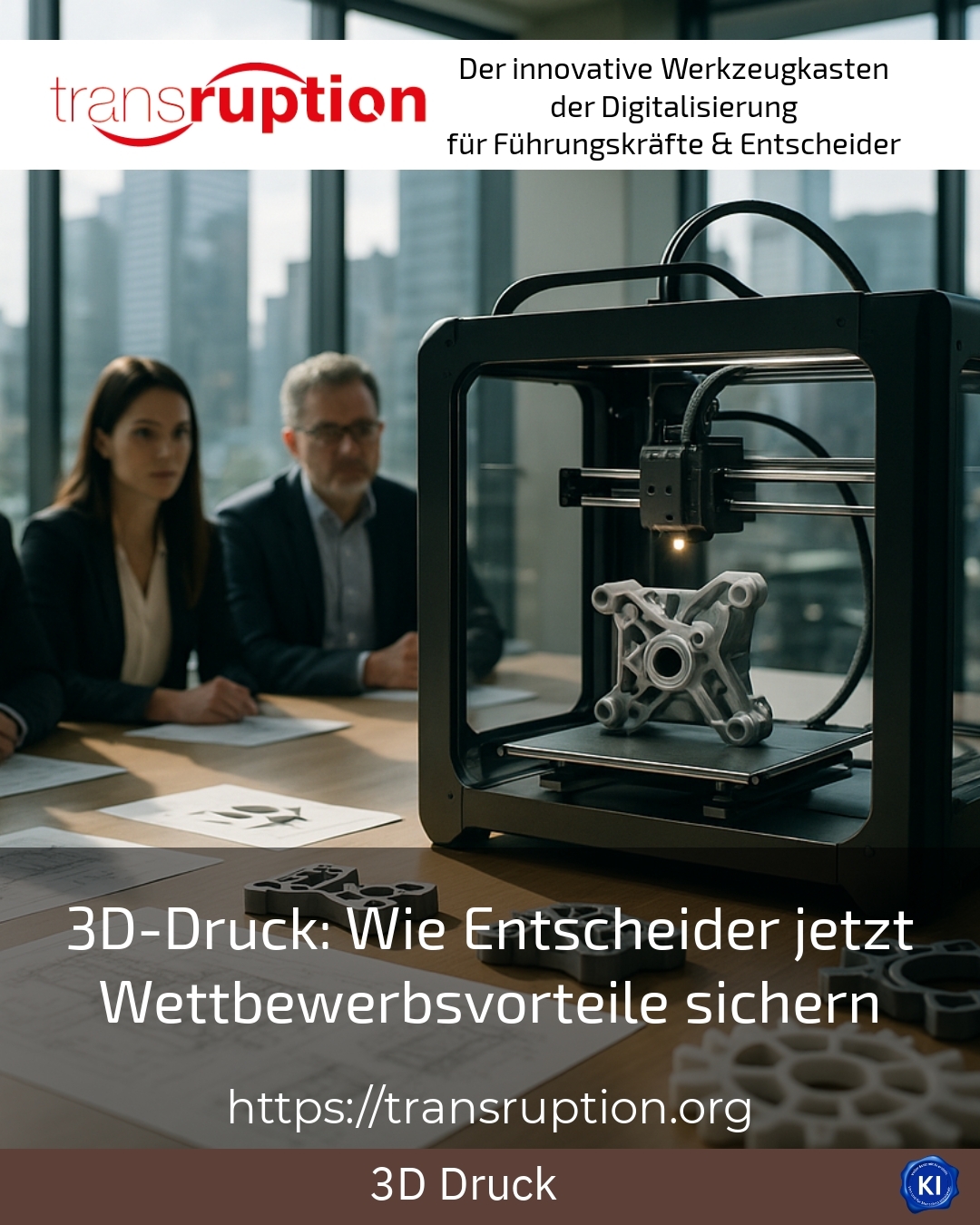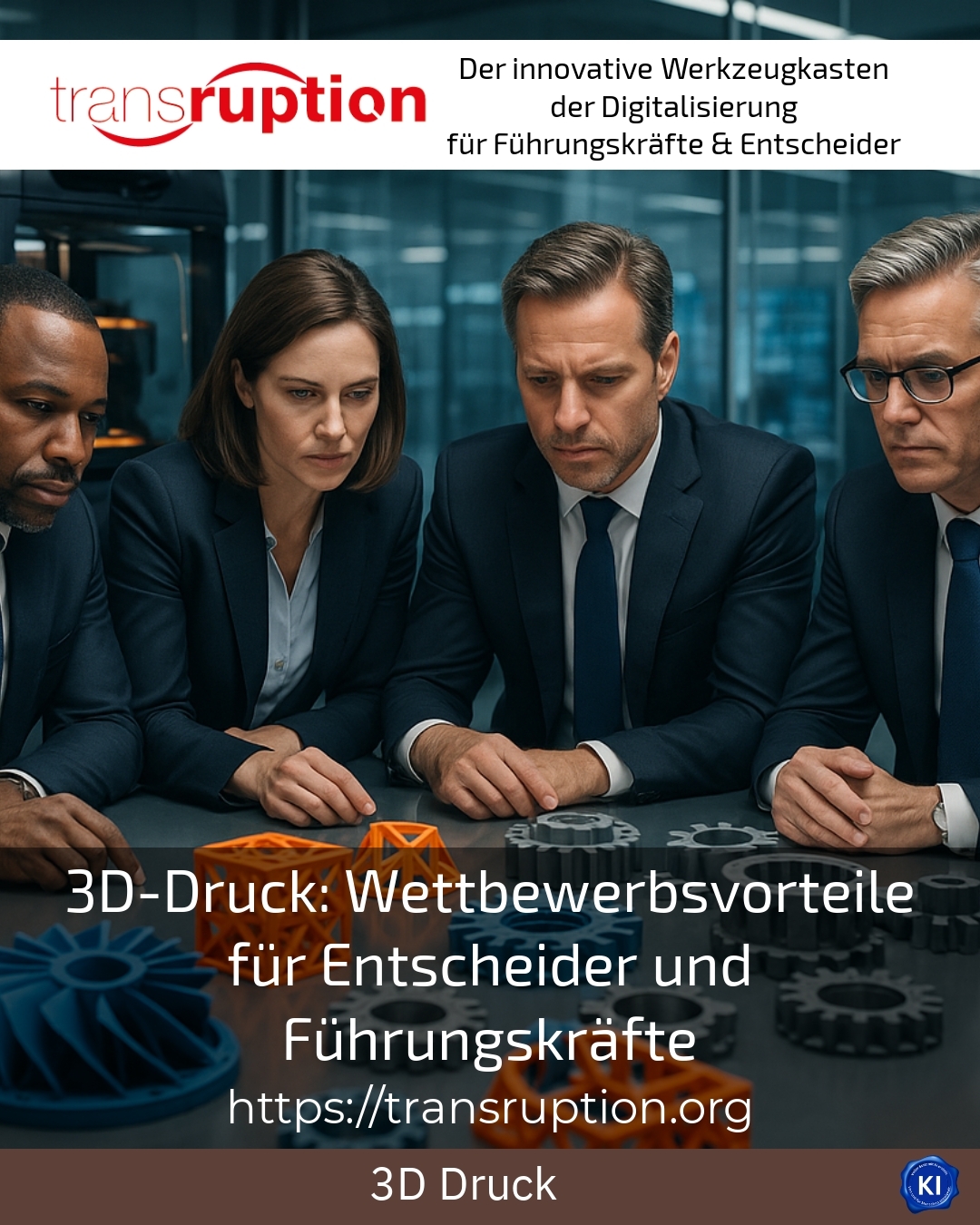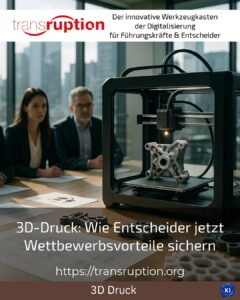Managers and decision-makers are under great pressure to change in a dynamic market environment. Technologies such as 3D printing offer a decisive competitive advantage here because they accelerate production processes, reduce costs and enable new business models. Companies that rely on 3D printing create a modern and future-proof framework - and are thus better prepared to meet the requirements of customers, markets and competitors.
3D printing: more than just a trend
For many companies, getting into additive manufacturing is first and foremost a question of innovation and technological expertise. Those who recognise the advantages of 3D printing early on benefit from greater flexibility, shorter delivery times and customised products. One medium-sized mechanical engineering company, for example, used the potential of the technology to realise functional prototypes within a few days - errors could be detected and rectified at an early stage, while competitors were still waiting for traditional production steps. This shortened the time to market by several weeks[1].
A look at the industry shows that 3D printing is no longer just used for prototypes, but has developed into a tool for the entire value chain. From the automotive industry, which has individually manufactured spare parts printed directly on the shop floor, to aviation, where complex components with reduced weight are created, to the consumer goods industry, which offers limited, personalised products in small runs - the possible applications are diverse[1][6].
Concrete competitive advantages through 3D printing
Those who consistently integrate 3D printing into their company processes will enjoy numerous advantages. We have summarised the most important ones for you:
- Individualisation and flexibility: Products can be designed directly according to customer requirements, even as individual items or small batches. This is a real added value, especially in the field of prostheses, jewellery or mechanical engineering[1].
- Fast prototypes and time-to-market: New products reach the market much faster because expensive tools and moulds are no longer required. Small and medium-sized companies can thus develop innovative solutions with limited resources[1][2].
- Cost reduction for small series: Expensive tools such as injection moulds become superfluous, which means that even small quantities can be produced economically[2][6].
From the idea to the finished product: practical examples
A company in the logistics sector prints spare parts directly on site, saving storage costs and drastically reducing delivery times. In architecture, true-to-scale models are produced within hours, which significantly improves communication with clients and planners. In the healthcare sector, patients benefit from customised prostheses that fit perfectly and offer maximum comfort[1].
In the consumer goods sector, we see how small manufacturers produce limited collector's items that are characterised by exclusivity and quality. Seasonal products that are only relevant for a short time can be developed just as quickly as special promotional items for trade fairs or events[1][8].
BEST PRACTICE at the customer (name concealed due to NDA contract): An internationally active plant manufacturer uses 3D printing for prototype production and direct spare parts production. This enables the company to react quickly to customer requests, recognise design errors at an early stage and efficiently ensure product quality. The flexible production of small batches is possible without long lead times, which sustainably strengthens customer satisfaction and the company's market position.
3D printing as a driver of innovation
Additive manufacturing provides new impetus for companies because it challenges established processes and creates space for innovative approaches. In toolmaking and mechanical engineering, assemblies that previously consisted of several milled parts are now printed as a single component - lighter, cheaper and available more quickly[5].
Many decision-makers use 3D printing to implement customer design specifications that would be almost impossible to realise using conventional methods. Complex geometries, cavities or integrated functions are no longer an obstacle today. Companies that utilise these possibilities are expanding their product range and tapping into new customer groups[3][8].
3D printing is also becoming increasingly important in the skilled trades and for service providers. For example, confectioners offer personalised 3D-printed chocolate creations, while advertising agencies create individual giveaways for campaigns. The technology is a tool for innovation, competitiveness and customer loyalty[8].
Mastering challenges: the path to success
Companies that successfully introduce 3D printing are faced with classic change processes. Initial investments need to be made in hardware, software and expertise, and quality assurance needs to be rethought. For many managers, it is helpful to involve external expertise or exchange ideas with experienced partners[4].
Transruption coaching helps companies to analyse their own level of maturity, identify suitable fields of application and develop individual solutions. Clients often report that a clear roadmap and the targeted training of employees are crucial to the success of a project.
Another major advantage is the collaboration with specialised service providers who can handle sporadic print jobs quickly and reliably. This maintains flexibility without overloading internal structures[9].
My analysis
3D printing is no longer a vision of the future, but a strategic tool for companies that want to combine innovation, efficiency and customer focus. The technology offers competitive advantages because it enables customised solutions, accelerates processes and opens up new business models. Those who invest early and consistently utilise the potential will strengthen their own market position in the long term.
Transruption coaching supports decision-makers and managers in taking the right steps - from the initial idea to integration into existing processes and scaling up. Experience shows: Anyone who deals with 3D printing today will be one step ahead tomorrow.
Further links from the text above:
3D printing processes: Competitive advantages for companies [1]
The key benefits of 3D printing for small businesses [2]
Success strategy - 3D printing [3]
3D printing for small businesses: A competitive advantage [4]
3D printing in the company: Advantages, integration and practice [5]
voxeljet: 3D printer manufacturer for the industry [6]
Competitive advantage thanks to 3D printing [7]
New business areas and competitive advantages through 3D printing [8]
3D printing service providers provide a competitive advantage [9]
For more information and if you have any questions, please contact Contact us or read more blog posts on the topic TRANSRUPTION here.
















